Revitalising a language and raising a family are both harrowing, amazing tasks. What happens when you do both at the same time? In celebrating Māori Language Week, Louise Whaanga (Ngāti Kahungunu) shares a wonderful account of the role Māori language children’s literature plays in their whare.
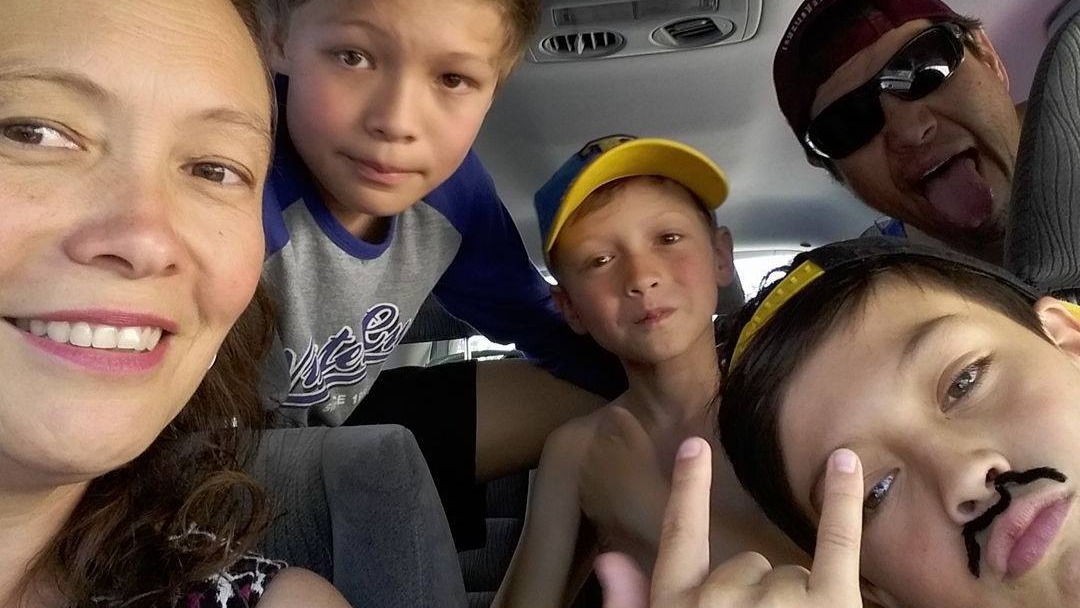
There’s magic in books. Magic that lets you escape your reality and see the world through someone else’s eyes, that transports you to other worlds. Living other lives without leaving your favourite comfy corner of the couch, that’s my kind of magic. The downside is dragging yourself back to seeing with your own eyes, speaking with your own voice – a kind of literary jetlag. The payoff is that you always get to bring a little bit back with you to keep. As a māmā, I have tried to share some of this magic with my boys. And as a māmā of bilingual boys I have tried to ensure that as much as possible of that magic happens in te reo Māori. Picture books are where it all begins.
Books build word power. Reading expands language and vocabulary into realms outside of the everyday, repetitive language of the home. One thing you find out as a parent of bilingual children is that opportunities for exposure to good quality reo are limited. And so, the ability of books to fill our kete kupu [word bank] is invaluable.
Something else we all associate with picture books is reading together and the precious bond that is created through sharing a book. On the subject of creating bonds, it has been recognised that the language spoken between two people at the start of a relationship will be the most normal and natural for them to speak from that time forward. This goes for parents and children too. So, if you hope to have a reo Māori or bilingual relationship with your child the earlier you start, the better. Te reo Māori picture books can form an important part of that dialogue especially if the parent is a second language learner – fake it till you make it!
…if you hope to have a reo Māori or bilingual relationship with your child the earlier you start, the better.
For these reasons as well as a love of te reo, I have tried to make te reo Māori books a big part of our reading list. This has not always been so easy. There used to be a lot less available in te reo Māori. The library selection was limited at best – in terms of numbers and also in terms of interest, but that’s changing. My oldest boy was obsessed with dinosaurs. My second boy loved prose with rhyme and rhythm. Not uncommon interests for children, but hard to satisfy through the te reo picture books available to me at that time. For some happy reason, the local Paper Plus had te reo picture books from time to time, which I snapped up. Then I discovered TradeMe, and was able to source more books than I had even known were available.
We really thrashed those picture books, but it would have been nice to have more choice, to offer the boys the richness and variety of language available through the hundreds of English language books on offer. Nevertheless, our book stash did steadily grow. Although they’re children’s books, the language is still often beautiful and evocative. And it’s not just the children who benefit. I would always sit down to read each book to myself first, with dictionary and pencil in hand. As a second-language learner māmā of bilingual babies, you learn together.
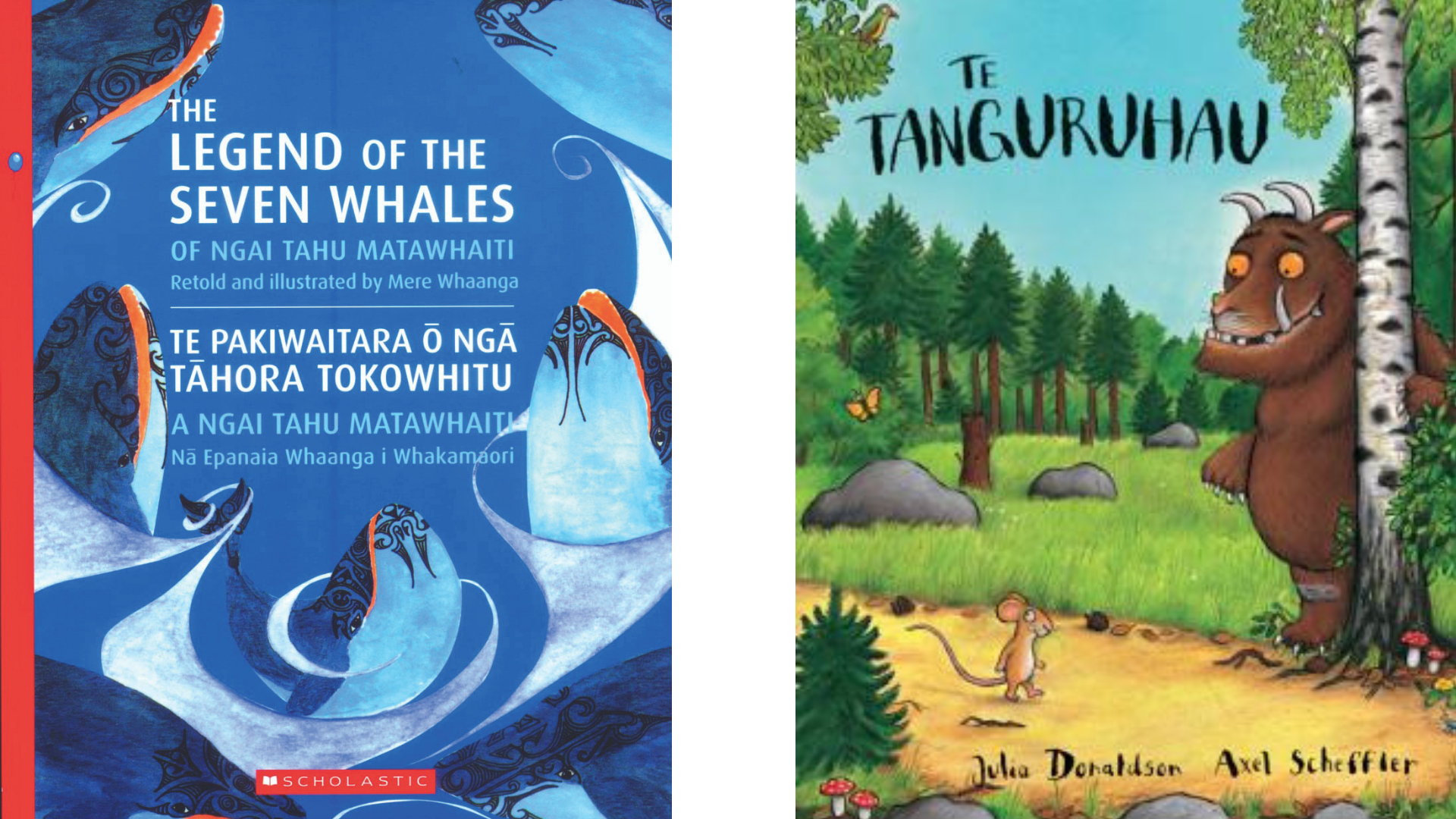
We have te reo Māori books that the kids have found scary, books that made them laugh, books that my pōtiki [youngest] still won’t let me read because he says they are too sad and always make him cry, and favourite books which became so familiar that we could recite them without looking at the page. One of the books we would often read was Te Pakiwaitara ō ngā Tāhora Tokowhitu by Mere Whaanga. The story is a pūrākau [narrative] from home, so part of its charm was being able to show the boys the hills/whales, to actually walk the talk. I see more books are being produced by iwi about their own pūrākau which is great, my hope is that we feel confident to tell the story with all the depth and nuance of the original pūrākau – children can handle complexity and our stories have been dumbed down too often. Writer Ngaere Roberts noted this recently.
Rhythm and rhyme have always been popular in our house too. Since they were little the boys had enjoyed The Gruffalo by Julia Donaldson, mostly because of the language. Imagine our joy when we discovered that this had been so cleverly translated into Te Tānguruhau by Brian Morris that the reo possessed both rhythm and rhyme while now having an unmistakeably Māori flavour!
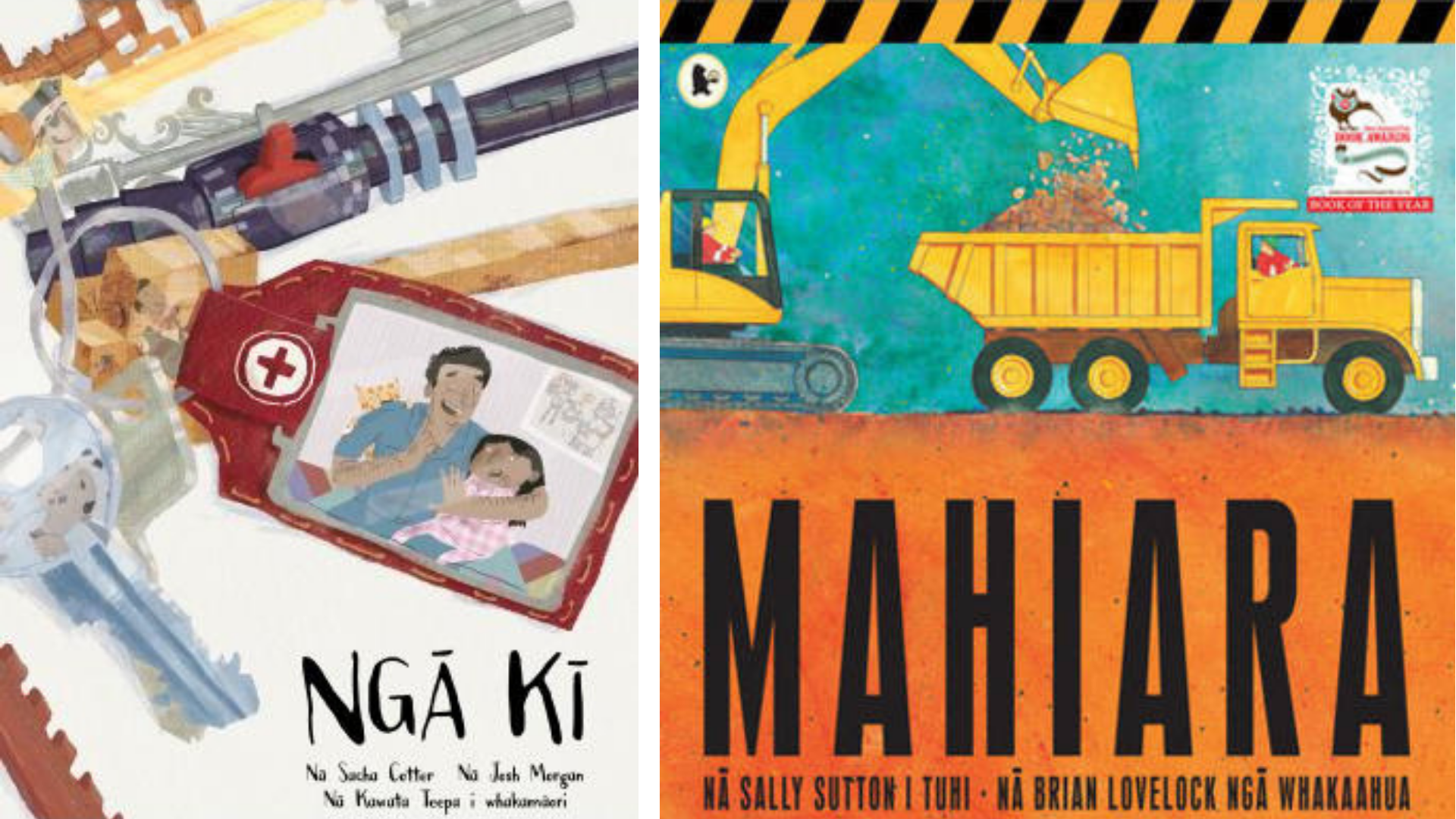
We also really like Ngā Kī written by Sacha Cotter and translated by Kawata Teepa, and for many years my pōtiki’s favourite book was Mahiara written by Sally Sutton and translated by the inimitable late Kāterina Te Heikōkō Mataira. Both of these books contain some jingling, jangling, creaking, squeaking onomatopoeia and are wonderfully creative and fun to read.
One of my favourite picture books, and I think the boys liked it almost as much as me, is Te Koroua me te Kōhatu Mauri by Robyn Kahukiwa. The story is uplifting, and the illustrations are sublime.
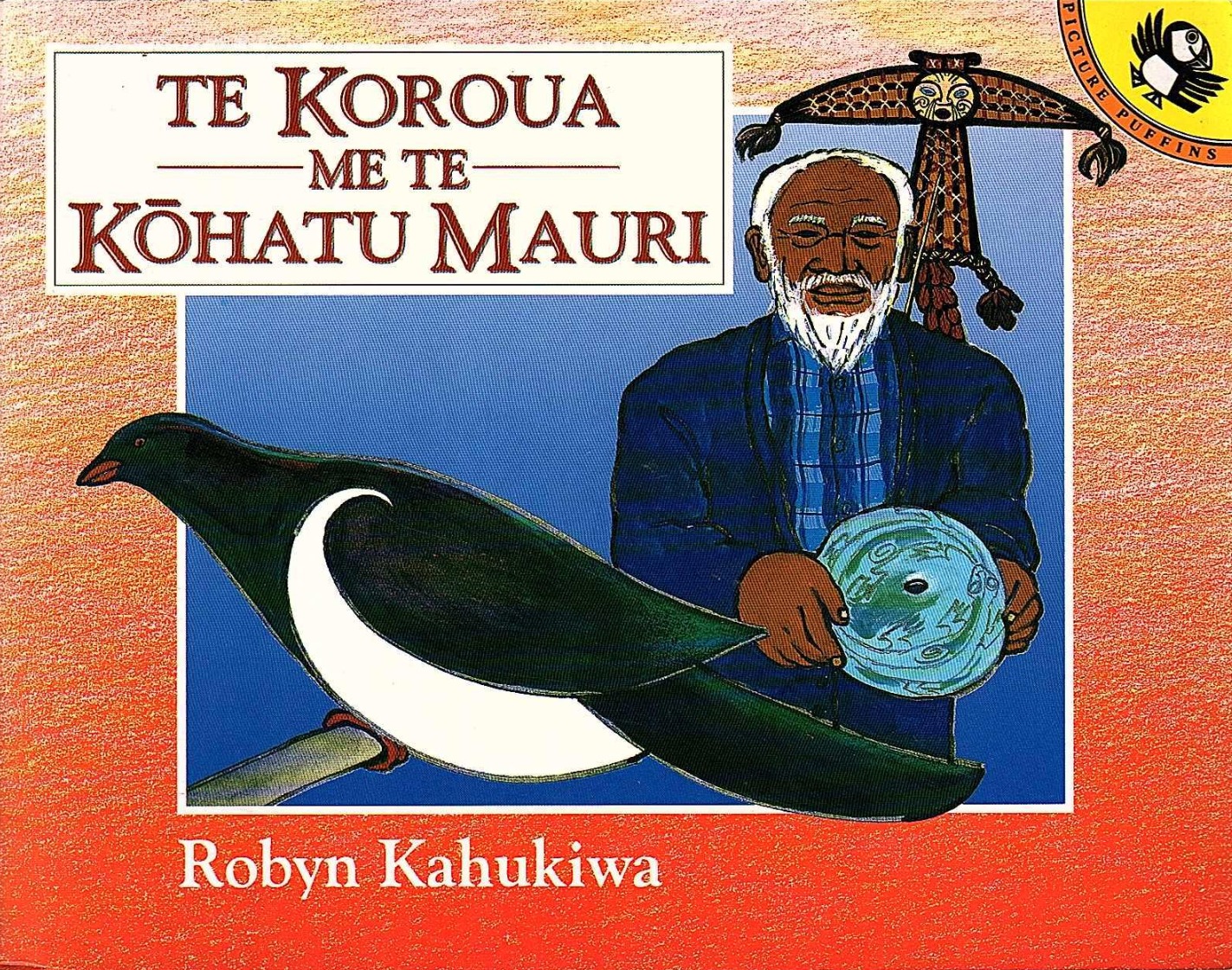
As the boys get older they have moved onto longer and more complex English books, but are starved for te reo Māori reading material. So it’s back to combing TradeMe and bookstores. One of our favourites is definitely the RT3: Rangi Tautoru trilogy by Tākuta Hōhepa (Dr Darryn Joseph). They’ve got monsters and space travel and clever use of language including puzzles, riddles, codes and jokes, like this one:
‘Pao, pao
Ko wai tērā?
Ko Pā
Ko Pā wai?
Ko Pātero!’
Yes, knock-knock fart jokes in te reo – that’s next level. More, please! Lots, lots more, if we are to keep our kids engaged in the dual magical worlds of books and te reo.
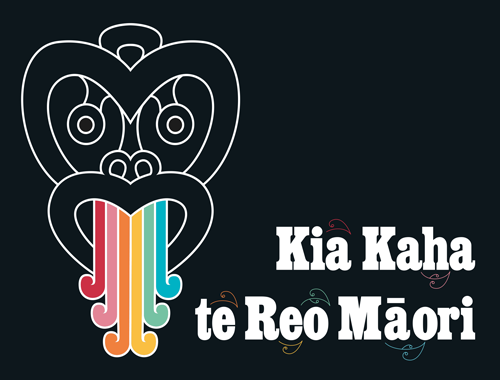
The theme for Te Wiki o Te Reo Māori this year is ‘Kia Kaha te Reo Māori’, ‘let’s make the Māori language strong.’ The poster depicts a hei tiki with a tongue comprised of six parts, each a different colour and representing a different way in which we learn a language. Yellow is pānui, to read. That’s an acknowledgement of the value of books, not least, picture books.
Books can make the language strong by building word power and, also through their ability to engage the heart as well as the head.
How else do we make our language strong? We need our children growing up with te reo Māori as a normal part of life. Picture books have been a big part of the life of this bilingual family. They’ve been a truly valuable tool for a second-language learner Māmā who sometimes (often) struggles to keep up with her kids’ language needs. More than that, I think when I look back on my time with my kids as littlies some of my most precious memories will be of reading with them. And what will make those memories even sweeter, is that they are reo Māori memories.
Magic.

Louise Whaanga
Ko Whakapūnake te maunga
Ko Te Wairoa Hōpūpū Hōnengenenge Matangirau te awa
Ko Takitimu te waka
Ko Ngāti Kahungunu te iwi
Ko Ngāti Matangirau te hapū
Ko Whaakirangi te marae
Louise lives with her partner and three boys in Napier. She is a full-time mum, part-time student, half-pai housewife and the kaiārahi reo for Maungaharuru Tangitū Trust.



